
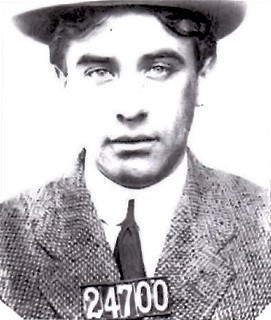 Boston Blackie (1944, 1945-1950) aired “The Undersea Murder” on October 1, 1946 as the 77th broadcast of the estimated 220 from its 1945-1950 run. This is but the sixth Boston Blackie episode we have featured, the first in 2018 with this being only the second since July of 2022, so for newcomers I recap below the rather fascinating history of the man behind the stories that eventually led to Boston Blackie coming to radio, film, and even early television. The show was produced originally in 1944 as a 13-episode summer replacement for the Amos & Andy Show. It proved popular enough and aired its first show in April of 1945, but under different ownership (ZIV productions, running on NBC in its own time slot), format, and actors. Chester Morris played Boston Blackie while Richard Lane played the part of Inspector Farraday in the 1944 replacement episodes, though in its official 1945 incarnation Richard Kollmar (1910-1971, photo middle right) became Boston Blackie, primarily due to contractual film obligations that stood in the way of Chester Morris continuing the role.
Boston Blackie (1944, 1945-1950) aired “The Undersea Murder” on October 1, 1946 as the 77th broadcast of the estimated 220 from its 1945-1950 run. This is but the sixth Boston Blackie episode we have featured, the first in 2018 with this being only the second since July of 2022, so for newcomers I recap below the rather fascinating history of the man behind the stories that eventually led to Boston Blackie coming to radio, film, and even early television. The show was produced originally in 1944 as a 13-episode summer replacement for the Amos & Andy Show. It proved popular enough and aired its first show in April of 1945, but under different ownership (ZIV productions, running on NBC in its own time slot), format, and actors. Chester Morris played Boston Blackie while Richard Lane played the part of Inspector Farraday in the 1944 replacement episodes, though in its official 1945 incarnation Richard Kollmar (1910-1971, photo middle right) became Boston Blackie, primarily due to contractual film obligations that stood in the way of Chester Morris continuing the role.
The Boston Blackie character first appeared in a series of short stories, the first in 1914 in The American Magazine by author Jack Boyle (1881-1928, photo top right). Boyle led a short but colorful life, spending two stints in prison for passing bad checks and forgery. Details of his life between the years 1908 and 1914, according to this website, are scarce, though through diligent research and some luck it was discovered that Boyle spent 10 months in San Quentin (mug shot top right) beginning on December 17, 1910 and was released the following October; though a few years later in 1914 he would be serving another stint in the joint, this time in a Colorado state prison for much the same offenses.
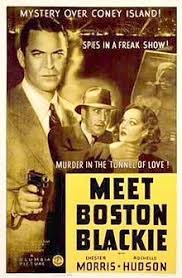
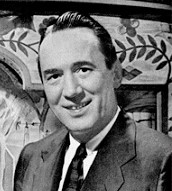 Turning what he knew into what he would write, Boyle then created the fictional character of Boston Blackie, a reformed jewel thief and safe-cracker who had done prison time and was now an “Enemy to those who make him an enemy. Friend to those who have no friend.” Blackie is aided in his capers by his rather slow-witted sidekick Runt, and is hounded by police Inspector Farraday (the police inspector working against, or trying to pin the blame for crimes against the hero being a popular formula that became a staple, i.e. The Shadow, Rocky Jordan, The Green Hornet, and many others in print, radio, and film). Boyle’s stories hit the right chord and a whopping 11 silent films featuring Blackie were made from 1918-1927. The series was picked up in 1941 with Chester Morris in the lead as Blackie in Meet Boston Blackie, the first of what would be 14 total films, the final one to hit the silver screen in 1949 and all starring Chester Morris. When the new medium of television became all the rage Boston Blackie was among the first to jump on board with Boston Blackie. It debuted in 1951, ran for 58 half-hour episodes until 1953, and would then air in syndication for almost another ten years. An interesting side note is that of Blackie’s 58 TV shows 32 were shot in color, while the remaining 26 were shot in black & white, shooting in color something unheard of at the time (and expensive) for an early television show. But the producers were ahead of their time and gambled that when color became more widely available there would be a market for color reruns. Thus, Boston Blackie would join the ranks of the few early TV shows also shot at least in part in color, Superman and The Cisco Kid two favorites coming to mind.
Turning what he knew into what he would write, Boyle then created the fictional character of Boston Blackie, a reformed jewel thief and safe-cracker who had done prison time and was now an “Enemy to those who make him an enemy. Friend to those who have no friend.” Blackie is aided in his capers by his rather slow-witted sidekick Runt, and is hounded by police Inspector Farraday (the police inspector working against, or trying to pin the blame for crimes against the hero being a popular formula that became a staple, i.e. The Shadow, Rocky Jordan, The Green Hornet, and many others in print, radio, and film). Boyle’s stories hit the right chord and a whopping 11 silent films featuring Blackie were made from 1918-1927. The series was picked up in 1941 with Chester Morris in the lead as Blackie in Meet Boston Blackie, the first of what would be 14 total films, the final one to hit the silver screen in 1949 and all starring Chester Morris. When the new medium of television became all the rage Boston Blackie was among the first to jump on board with Boston Blackie. It debuted in 1951, ran for 58 half-hour episodes until 1953, and would then air in syndication for almost another ten years. An interesting side note is that of Blackie’s 58 TV shows 32 were shot in color, while the remaining 26 were shot in black & white, shooting in color something unheard of at the time (and expensive) for an early television show. But the producers were ahead of their time and gambled that when color became more widely available there would be a market for color reruns. Thus, Boston Blackie would join the ranks of the few early TV shows also shot at least in part in color, Superman and The Cisco Kid two favorites coming to mind.
Last week’s episode, “Light Ship,” took us to a storm-tossed sea and the desperate plight of stranded sailors, while this week’s “The Undersea Murder” takes us beneath the waves in search of gold, a convenient McGuffin fit to kickstart this tale of murder, attempted murder, those thought to be murdered, and a few unsavory amoral characters thrown into the mix for good measure, each of whom stopping at nothing to eliminate by any means possible those also competing for the gold. The storyline takes a number of surprising twists and turns to make matters interesting, and only Blackie and Inspector Farraday are able to unravel this tricky who-(or how many)-done-it and sort out who gets their just comeuppance…and maybe the gold.
(The linked CD at top includes this episode and 19 more, all digitally restored and remastered.)
Play Time: 27:39
{This episode of Boston Blackie aired at 7:30 on a Tuesday night in its ever-changing broadcast schedule. The neighborhood gang could hardly wait to visit the nearby newsstand the next day after school, and it didn’t take them long to choose both science fiction and detective magazines that looked more than promising. They soon discovered they had chosen wisely. Astounding SF (1930-present, now Analog SF) had long been a favorite and a must buy, and this issue was no exception with a new A. E. van Vogt story gracing the cover. Astounding was a monthly in 1946. New Detective Magazine (1941-55) offered pretty much core detective and crime fiction by some of the field’s best authors and had a good run until the middle of 1955 when it abruptly changed names to True Adventures and became a men’s magazine until it ceased publication in 1971. In 1946 it was a bi-monthly, though it did sneak in a 7th issue between its January and March issues. Thrilling Wonder Stories (1936-55) was one of the most beloved of the early SF pulp magazines, along with Startling Stories (1939-55) and Planet Stories (1939-55). They were known for their colorful, plot-driven action-adventure stories in exotic locales on other worlds, where more often than not the fate of a scantily-clad damsel in the clutches of a horrible monster was in the hands of the stalwart hero. Science and logic often took a back seat to wild imagination and improbable plot contrivances, but the stories warmed the hearts of young and old alike and made for many of the favored classics now to be found in many a lovingly curated collection, While ostensibly on a quarterly schedule, TWS nevertheless squeezed in a 5th (December) issue in 1946.}
[Left: Astounding SF, 10/46 – Center: New Detective, 11/46 – Right: Thrilling Wonder Stories, Fall/46]
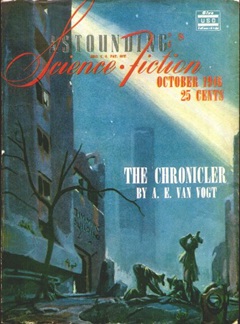
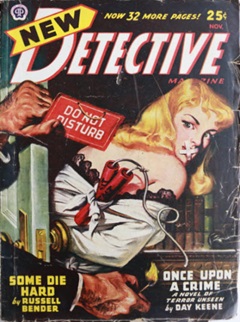
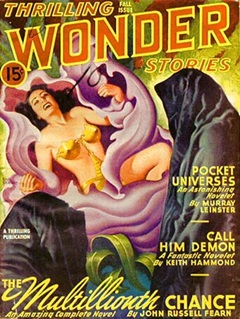
To view the entire list of weekly Old Time Radio episodes at Tangent Online, click here.